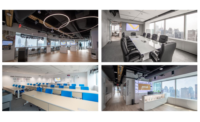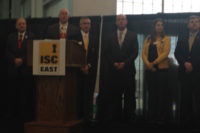Towering over the Hudson River on Manhattan’s New West Side is Hudson Yards — a cultural epicenter with more than 100 diverse shops, residences and culinary experiences. By area, it’s the largest private real estate development in the United States, covering more than 18 million square feet over seven city blocks.
Early in the planning process, the Hudson Yards development recognized the opportunity to power Hudson Yards in a resilient, effective and sustainable way. The answer was a 13.3-MW cogeneration (CoGen) plant, which is not your typical power plant.
“The plant is a green initiative, we wanted to limit the greenhouse gasses by burning natural gas onsite, said Nick Lanzillotto, VP of MEP-HRY Development. “It means we use about 80 percent of the energy the plant produces both electrical and thermal energies, as opposed to around 30 percent of the energy from commercial electric suppliers.”
The CoGen plant at Hudson Yards serves all the buildings in the Eastern Railyards development. The buildings energy needs are met with Cogen as well as the buildings own infrastructure. For such a complex system, in order to operate smoothly, the plant requires a master control room.
“We needed to set up a control center that’s more typical of a power plant and a district energy plant rather than a typical New York City skyscraper,” said Lanzillotto.
Lanzillotto had a vision for this control center, but well into the center’s development, he realized his vision wasn’t being achieved. That’s when Lanzillotto turned to Winsted to help deploy a control center from concept to installation that would keep operations running smoothly at all times.
In total, the CoGen plant’s control room contains five workstations, each with four monitors. An 8 foot by 16 foot video board stands in front of the workstations. Outside of the control room sits the information room with a single technician workstation, filing cabinets, storage cabinets and a blueprint-reading table with additional storage.
“If the whole project went as easy our work with Winsted, it would’ve been great,” said Lanzillotto. “From rendering to layout, to determining the right components, all the way to installation, it all went very smooth.
With Lanzillotto and his team happy with the deployment, they also used Winsted for their fire command center.





